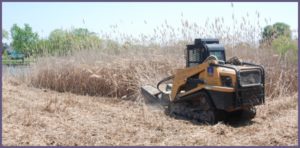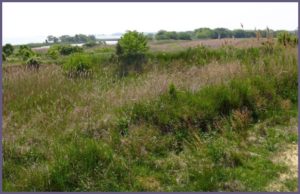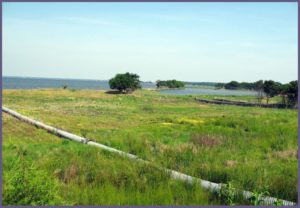Phragmites australis, also known as Common Reed, is a large, coarse, perennial grass found in wetlands. It occurs in every continent on the earth except Antarctica. In the United States, it is considered one of the most invasive plants in wetland communities. It has a thick stalk with a hollow stem that can reach 13+ feet in height with a large plume-like flower that persists throughout the winter. It spreads by seed or by creeping rhizomes and surface runners to form a dense mat of roots up to several feet thick. A single plant can spread up to 30 feet in one year!
MANAGING PHRAGMITES
Based on our years of experience, the most efficient method for controlling Phragmites combines chemical (herbicide) and physical (mowing) treatments.
Herbicide treatment of Phragmites is accomplished in the fall (August through October), when the foliage is green, the plants are actively growing and at mid to full bloom. When sprayed at this time, the herbicide is rapidly absorbed and transported throughout the plant tissues, killing the entire plant, including the rhizomes. After the application of herbicide, the Phragmites dies within 6-8 weeks.
Cutting or mowing Phragmites takes place in the winter (December through March). By cutting Phragmites, light reaching the ground is increased. Light encourages germination of existing seeds lying dormant in the soil and in many cases desirable plants will recolonize the wetland quickly.

Even with a successful initial treatment, some regrowth of Phragmites is expected due to unconnected rhizomes and new seed germination. For best results, the area is treated for at least two consecutive years and is re-planted with native grasses as needed. Future spot treatments may be necessary to prevent re-establishment.
HERBICIDE USE IN WETLANDS
Environmental Concern Inc. is licensed by the Maryland Department of Agriculture to apply herbicides.
Environmental Concern uses herbicide that is specially formulated to break down quickly in the environment. It does not harm fish, insects or other wildlife. We use a formulation that has been approved by the U.S. Environmental Protection Agency for use in wetlands.
Care should be taken to spray only target plants with the herbicide. This is best done by professionals.

